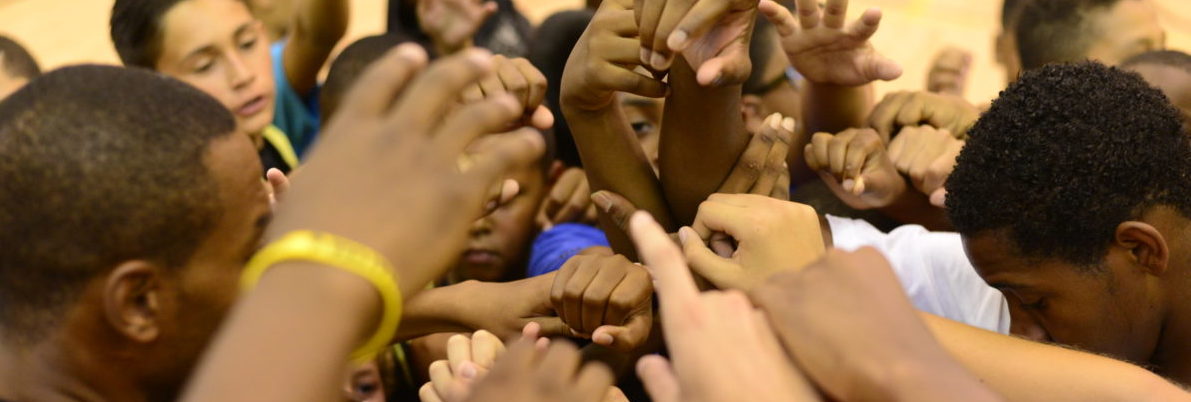This post is part of a National Alliance to End Homelessness blog series to highlight the Rapid Rehousing Learning Collaboratives in Georgia and Maryland. Read more about Learning Collaboratives in the first post in the series here.
On a Friday night in late June, Rapid-Rehousing Case Manager Latoya Inzar helped end homelessness for two families – in the same apartment building.
The agency she works for, MUST Ministries in Marietta, Georgia, was nearing the end of a 100 day #HousingChallenge that marks the culmination of their participation in the Rapid-Rehousing Learning Collaborative. The Learning Collaborative is comprised of sixteen agencies committed to shifting their organizational culture, operations, and practices to improve their Rapid-Rehousing programs and quickly end a households housing crisis in their community. This Collaborative is made possible through a partnership between the Alliance and the Georgia Department of Community Affairs.
Confronting Obstacles
MUST Ministries is now housing several households a week, but their success has not come without challenges. Rapid Rehousing, a critical part of the homeless system that helps people quickly exit from sheltered or unsheltered homelessness to permanent housing, was a little-known strategy to end homelessness in the region. When MUST received a new grant to bring the intervention to five counties, they knew they’d have to spread the word and build their capacity to do their job.
When they started Rapid Rehousing, other providers didn’t know about the model, landlords had never worked with the program, and many of Latoya’s co-workers didn’t even know what her job was.
They also met challenges faced by other agencies in the Learning Collaborative, and by Rapid Rehousing providers across the nation: limited affordable housing, strict credit and rental history requirements, and landlords who are sometimes hesitant to work with a third party.
However, MUST Ministries overcome these challenges with a combination of creativity and persistence. With technical assistance and organizational action planning from the Alliance’s Capacity building team and peer support from other providers in the Collaborative began to see the change.
Spreading the Word
Latoya started with her coworkers. She hung a poster, made at a Learning Collaborative meeting, in her office hallway as a space to visually demonstrate the number of households housed through Rapid Rehousing. She relentlessly elevated and discussed the program during staff meetings and other conversations to educate and to ask for referrals to landlords.
Then she made sure that the search for housing was as brief as possible for her clients. She encouraged them to begin looking for housing as soon as they were referred, and provided them with a list of landlords that she knows. A housing questionnaire and budget form was added to the intake process to elicit more information on the client’s preferences and to identify the most appropriate resources, including shared housing.
Finally, Latoya began building and strengthening her relationships with landlords. She provided them with a simple and comprehensive brochure that she created, based on the three core components of Rapid Rehousing: housing identification, move-in and rental assistance, and rapid rehousing case management and services.
Latoya also frequently expedites the application and approval process by being in constant contact with the landlord through phone calls, emails, and in-person meetings. Once a tenant is approved to live in a unit, Latoya maintains and builds the rapport with the landlord by communicating openly, facilitating on-time rent payments, and providing a branded bag and other trinkets.
Seeing the Difference
MUST Ministries set an ambitious Housing Challenge goal of housing 10 households in 100 Days, and ended up exceeding that goal by housing 13 households. That more than doubled their rate from before the challenge! By engaging with the technical assistance, webinars, and peer support included in the Learning Collaborative, MUST Ministries increased their housing pace and continue to work with a constant flow of households to re-house them quickly.
Now that Latoya has educated her community and begun building a strong network of landlords, she’s looking towards the future. She has ideas about how to partner with landlord associations and collaborate with other agencies to hold forums about Rapid Rehousing for prospective landlords. With the tools, resources, and skills she received from the Learning Collaborative, Latoya is looking forward to more days of housing multiple families at once.

